Posts Tagged ‘Chickens’
Build a Mini PVC Pipe Garden House
For many years I had trouble with birds (and my own chickens) getting into the garden and eating tender vegetable plants as they emerged from the soil. And, in the colder months I wanted to extend the growing season and protect my crops from frost. I wanted to install a hoop house, the kind I’d seen in magazines or while driving back country roads, but they were too large for one person to manage and too expensive for my limited budget.
I wanted something lightweight, easy to move and something I could make myself with supplies I might already have on hand.
I looked around the farm to see what I could use and hoped that an idea would come to mind. Sure enough, it did. As I stared at my raised beds I thought of a mini greenhouse type structure that could be draped with bird netting in the growing season and float cloth or plastic to extend my plantings.
Here’s what I came up with:
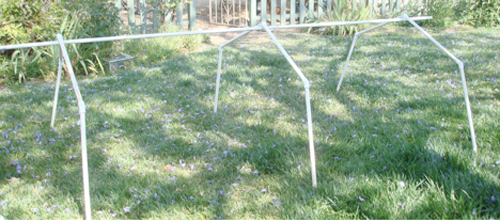
A PVC frame that fits over my 4’x8’ raised beds and is held in place by “C” brackets screwed to the wooden vegetable bed frame. A 10’ piece of PVC runs the length of the uprights to keep the covering draped properly over the frame. At ground level it can be tacked to the wooden vegetable bed or covered with dirt or rocks to keep it from blowing off.
How I made it:
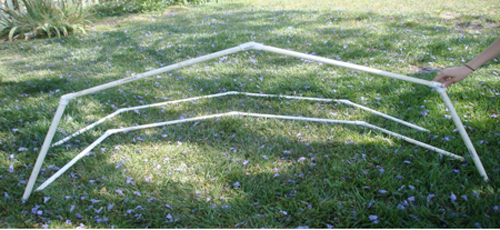
I cut 4 pieces of PVC pipe 2 feet long; two for the sides and two, half the width of the vegetable bed, to make the peaked top. This would be wide enough to reach across the bed and give good clearance for taller plants like lettuce, broccoli or tomatoes. I then assembled the greenhouse frame using 45 degree PVC pipe fittings (these were on hand, but 90 degree might work better on the legs). Once I tested the greenhouse, to see if it did what I thought it would, I glued all the pieces together. I made 3 frames for each 8’ bed.
To install my newly made mini-greenhouse, I screwed “C” brackets into the vegetable bed frame about 6-inches from each end and in the middle of the bed (about the 4’ mark), I then zip tied a 10’ piece of PVC pipe down the middle to keep the peaks upright and to keep any covering from falling in on the plants.
In less than an hour, using the supplies I had on hand, I made enough frames to cover four of my eight vegetable beds; protecting my crops from marauding chickens and scavenging birds.
Simple Wealth and Winter Preps
September is here, folks! I can hardly believe it is just one month until my beloved October. The thought of it makes my heart swell.
This long Labor Day weekend started early with a steel gray glimmer of morning and a breeze that glided over me, soft and cool; the first gentle kiss of autumn. It was still in the 50’s when I ventured outside in my sweatshirt and muck boots, watering and feeding chickens and rabbits. There are no leaves falling yet, but the world is changing, moving ever so slightly from one season to another. You can feel it in the sunrise. You can feel it in the change from our blistering August heat wave. You see it in the evening as the sun sets farther to the south and the rising moon throws a golden cast over the farm.
We are picking tomatoes and zucchini almost daily, little shards of insurance for a small family. A pint-sized mason jar filled with fresh herbs sits on the windowsill sending a wave of fragrance through the house. My lone sunflower is beginning to bloom, tall and big and yellow; the last survivor from marauding birds and scavenging chickens, and a few apples hang on the tree growing fat and juice, until they are plucked off and put into a pie or cobbler or spice bread. Some of the older hens that were beyond being good layers and a rooster were taken to the feed store to be given away. I’ll hold on to the few good layers I have until spring then think about increasing the flock. Production is a big deal on our little farm and those who can’t pull their weight in stocking the kitchen don’t stay around to waste precious feed. Sounds harsh I know, but that’s the reality of farm life.
Winter preps are still at the forefront of my mind. I feel an urgency about getting this farm settled for a long winter, maybe even more so than in past years. The agricultural meteorologist, the one all the farmers listen to for weather forecasts, is calling for an El Nino winter; and that can mean only one thing — RAIN — and lots of it. Making sure the farm is set to handle such storms drives my actions.
The new batch of meat birds is slatted to arrive next week and now that the opossum family has been caught and relocated I am more excited than ever to get some meat in the freezer. I still have a few half chickens left. There are also packages of lamb, the ducks we raised in spring and containers of soup base and cooked down chicken carcasses that can be made into casseroles and potpies. The pantry is pretty well stocked with dry goods like beans, lentil, rice, barley and pasta; all the makings for a hearty and warm winter meal; and with Brianne off to college even the smallest amount of meat and veggies seem to go farther. Even with all this, I’ll make a stock up trip to fill in and take advantage of prices before we see increases caused by this summers’ drought.
The greenhouse now has a roof, a barrier from the wind and rain. The plan is to finish the walls this weekend. With any luck the whole thing will be done in a week or so and I can begin planting root veggies and salad greens in the fall garden. Maybe I’ll even try a few potted veggies that can stay in the greenhouse over winter. One of the nice things about living in an area where you can garden 365-days is that we do not have the pressure to “get seeds in the ground” like other areas of the country.
I still have firewood to bring in and the house to switch over from summer to winter. My list is made and it’s thrilling to cross things off. By the time wood smoke circles the farm we’ll be ready, mark my words. This will be a warm and comfy farm house, glowing and smelling of winter.
I am smiling, folks, for these are all small banks of insurance. Money may be nice, but it can’t beat a warm stew fresh from the farm. Now that’s simple wealth!
Making Your Own Worm Bin

Earth worms are an essential part of good gardening. At least in my mind they are. They are eating machines, transforming kitchen and garden scraps into nutrient rich soil and castings, while churning up the soil, aerating it and improving its tilth.
Raising your own earth worms is easy and inexpensive, if you use materials you already have on hand. Or, you can buy a worm bin system from a garden center or by mail. But, no matter how you come to raising earth worms you’ll never regret the initial work or cost and your garden will benefit greatly from the improved soil.
I was lucky – the previous owners of my farm left a multi-tiered worm bin when they moved out. It sits in the shade near the barn with easy access to the garden and rabbit hutches, and is used all year round. The soil produced is a great addition to our raised beds, as long as I can keep the chickens from eating the worms. But, that’s another story.
To build your own worm bin all you need is a container, either a wooden box, plastic storage bin or 5-gallon bucket. Any type of container should be about 18 to 20-inches deep, but no more than 24-inches deep.
Ventilation of the bin is very important, so which ever type of container you choose drill a few dozen ¼-inch holes in the top and 1/8-inch holes in the bottom and on the sides so the water can drain out. If you purchase a worm bin system they will have a mesh looking bottom for ventilation. Read the rest of the story »
Great Summer Read!
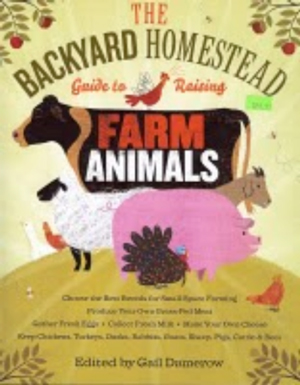
Suburban homesteads come in many shapes and sizes, taking their own path to self-sufficiency, but, in my mind, a true homestead needs livestock to be complete. Whether two footed or four; feathered or furred or wooled, animals are what turn a backyard garden into a full fledged farm. Without them all you have is a garden, which is nice, but a homestead is a little more scrappy. It’s loud and it’s dusty and sometimes messy when it’s full of feathers and cloven hooves, paws and fur.
I found a new book for my homestead library recently – The Backyard Homestead’s Guide to Raising Farm Animals.
It’s the livestock companion to the original Backyard Homestead, and it’s a fine introduction to jumping on the livestock bandwagon. At first it may seem a little elementary for the more seasoned livestock person, but it’s perfect for those who have dreams of turning their landscaped suburban lot into a thriving mini-farm, or those who have never held a chick or readied a hutch for kits.
It’s a friendly read, full of easy to understand information about the basics of starting a flock of chickens, ducks, turkey’s or geese; a hutch or two of rabbits; or a herd of goats, sheep or pigs. It even has information about raising cattle on a small suburban homestead. It will give you a good idea of what you’re getting yourself into, along with wonderful plot maps on how to lay out your farm if you’re just getting started.
The illustrations and sidebar instructions are great and each species is broken into its own chapter, so you can read only those parts that interest you. Want goats, but not pigs. Fine. Can’t have bees, but can have chickens. No problem, just read the chapters you want.
Even with my years of livestock experience I’m still able to glean useful information from new sources. It’s becoming a new favorite around here. Grab one for yourself.

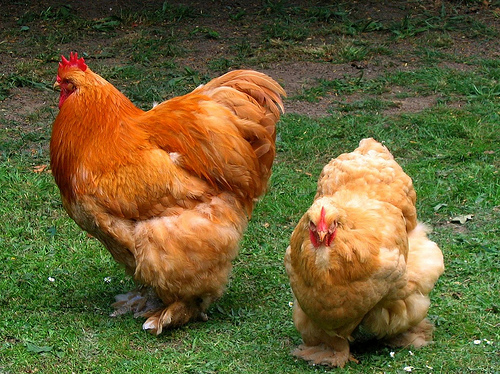
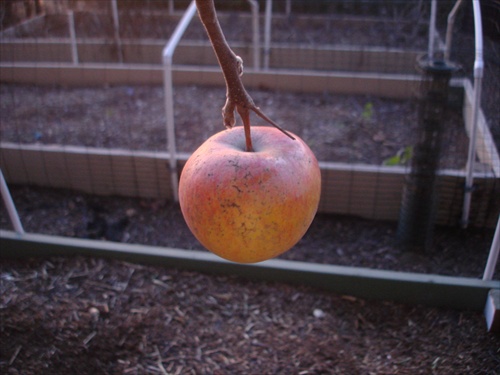

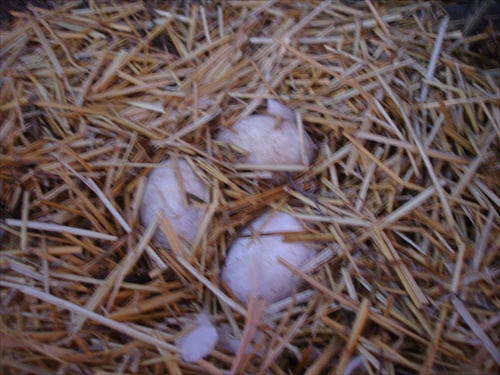
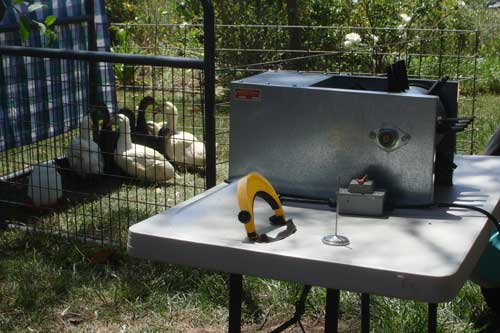
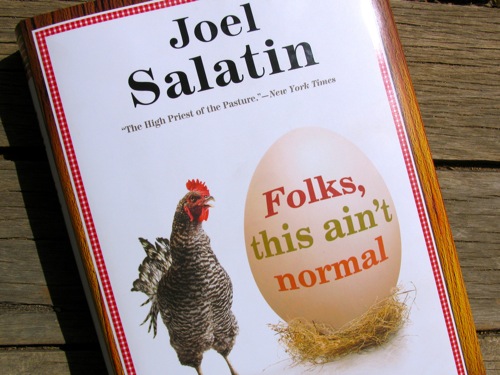
Recent comments
Aenean nonummy hendrerit mauris. Phasellus porta.